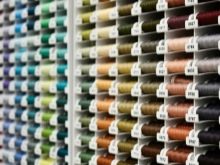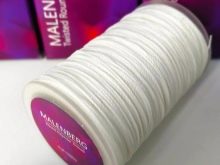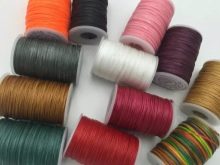Choosing threads for leather
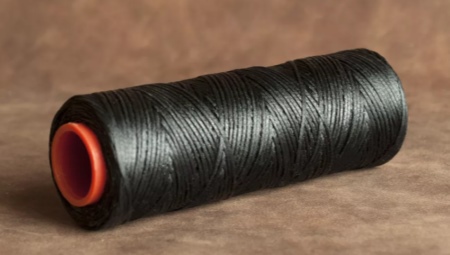
Those who work with leather probably know how difficult the work can be, if in the process you do not use special devices, suitable accessories. Getting started with this beautiful, but difficult material, you need to know the peculiarities of its processing and be able to choose the right threads for each type.
Peculiarities
Having engaged in sewing leather goods, do not forget that this material has different thicknesses, differs in texture, and stretches. Based on this, when sewing leather products, it is necessary to use special tools and threads.
Thread needles are the main materials used in sewing. The needle for this must be special, thin, long and perfectly polished. Its tip usually looks like a triangular blade, thanks to which it will gently cut and stretch the skin, not allowing the material to break as the thread passes. When sewing eco-leather, a special sewing needle is used to prevent peeling of the paint in the puncture area.

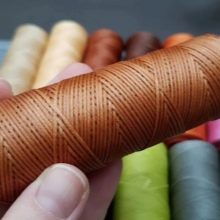
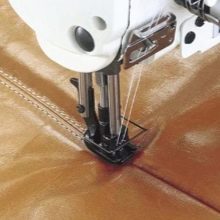
Small leather goods, such as accessories, are usually sewn by hand. In this case, nylon threads are more suitable. At the same time they are not suitable for working on a sewing machine, since they can tear the skin when sewn. When processing large items, for example, car covers, or for furniture, twisted braided threads are used.
Working with such material requires some skill. Unlike fabric, when working with leather, you need to set aside the pins to secure. Each puncture made with a needle or pin leaves a mark on the material that will be visible later. Temporary bonding can be made with paper clips, duct tape or Gutermann glue sticks.This pencil is very handy as it will not clog the eye of the needle or spoil the threads.


A seam or seam seam is suitable for joining leather parts. In this case, the allowances should not be ironed, they must be carefully straightened and glued with a special glue, for example, for rubber, which will retain elasticity during the drying process.
Often, finished leather goods are decorated with embroidery. Simple patterns can be made by hand, while complex compositions are advisable to embroider on a typewriter.
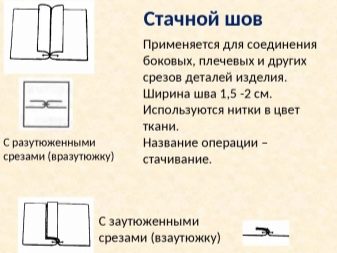
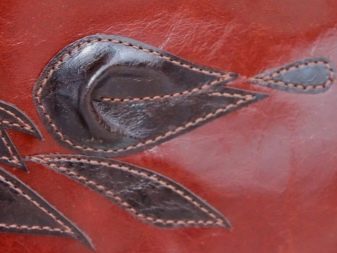
Views
To obtain a quality stitch, it is necessary to select the correct thickness of the needle and threads in accordance with the density of the material. The choice of threads is carried out taking into account the thickness of the needles. For thin needles or long needles, choose a thread with a lower number. Special tables will help you determine the features of the fittings and their choice for certain types of products.
-
For eco-leather, as well as for loose leather and leatherette products, it is better to use coils # 45 or 35. The threads are quite strong and not very thick; they do not require reconfiguring the machine specifically for them.
-
Thread # 20 can be used when stitching the outer elements of accessories or for a decorative seam. In this case, a thicker needle is selected for it, the tension is adjusted, and the optimal stitch length is also set.
When using accessories for work on conventional or professional sewing machines, it is important to choose options that are particularly durable. It is also important that they are elastic. Old spools left over from the times of the USSR will not be useful in work, such threads are very thick and will break even with a slight tension. However, they will soon begin to deteriorate and rot.
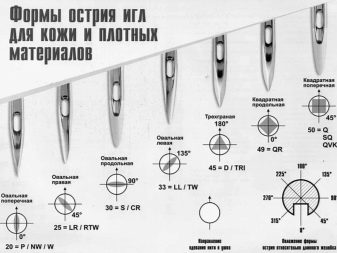
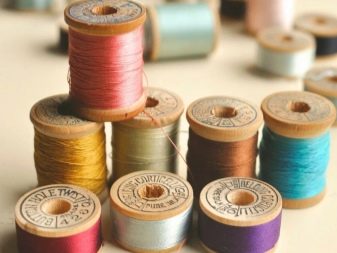
For things that are sewn by hand, it is better to take nylon threads. But with machine stitching, they can tear the skin. For this purpose, reinforced threads are more suitable. In the process of working with such threads, it is possible to achieve a delicate and neat seam that will not pile up. They are durable, will not fray or stretch, are resistant to electrification, do not shrink when washing, and do not fade when using household chemicals.
To create a strong and neat seam will allow the use of cotton (LH) and mylar (LL) threads. Fittings with increased strength include LH class threads. And also they have increased resistance to high temperature indicators.
For non-thick material, 44LH threads are taken, and for leatherette it is more expedient to choose products of the 65LH class. The composition of the LL class threads contains polyester. Products marked 45 LH are more suitable for leatherette or thin leather. It is better to sew shoes or thick leather with threads of class 70-80 LL.
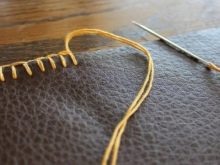
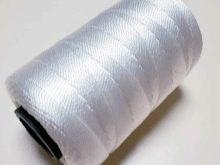
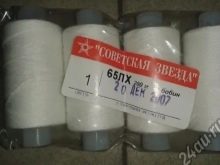
It is especially worth highlighting filament threads, which differ from reinforced ones in that they are not twisted from fibers. They are produced by polymerization. More often used in the industry accessories for the manufacture of covers for furniture or cars, when sewing bags for travel, shoes.
When embroidering leather goods, many prefer nylon options. For hand embroidery, a floss can be used. Sealing with a duplicate will ensure a better performance of the work, while the stitch will lie much more evenly.
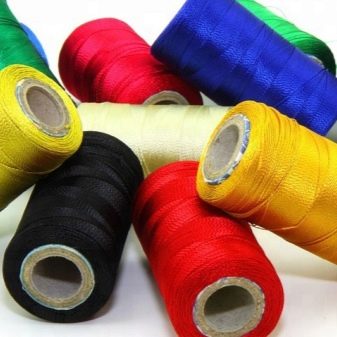
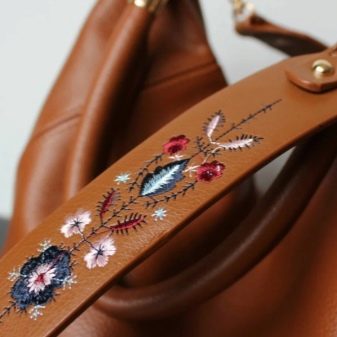
How to choose?
When choosing accessories for creating leather products, you need to pay attention to the markings indicating the width (in mm).
-
If you need to sew a small item, such as watch straps or wallets, it is better to use a thread width of 0.4 mm. This will give the finished thing lightness, make it harmonious.
-
For sewing bags or belts, it is advisable to choose threads with a width of 0.5 mm.
-
To sew a backpack or shoes using thick leather, accessories with a width of 0.7-1.0 mm are taken. If there is a double twist, the seam will appear smoother and look much neater.
-
When doing the work by hand, waxed linen thread No. 10 is used. It is produced using a special method from linen yarn.Such fittings are particularly durable and have a matte shade.
-
An excellent choice for imitation leather would be the use of # 40 spools. This material is quite soft, so a thin seam will look harmonious with it. You can stitch the handles # 20, this will make the seams more expressive and strengthen the bag.
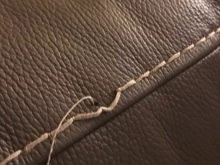
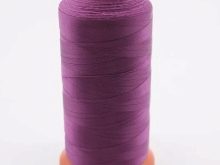
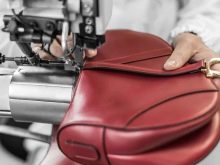
The choice of thread colors also plays an important role. Their color can fully match the tone of the product or contrast with it. Light colored threads will look good on dark skin and vice versa.
The use of proven sewing accessories of well-known brands will ensure high-quality performance of the work. Products of English and German manufacturers, domestic options, as well as accessories from Asian companies, which are distinguished by a low price and a large color palette, remain popular.
You can purchase products in sewing departments or shops, where experienced consultants can provide complete information.
